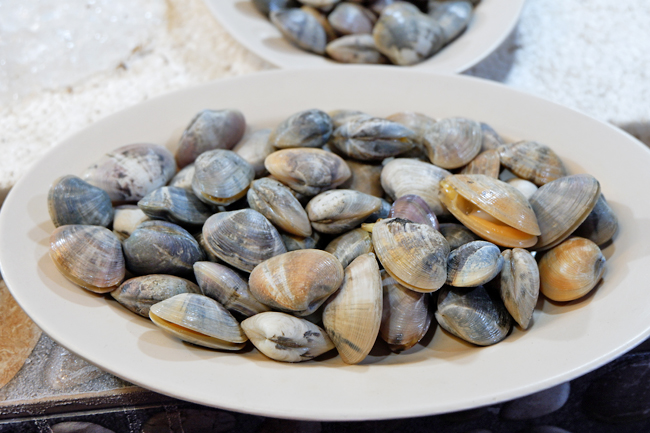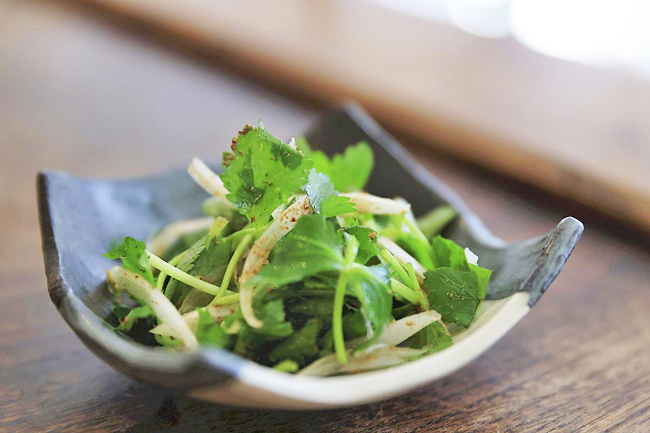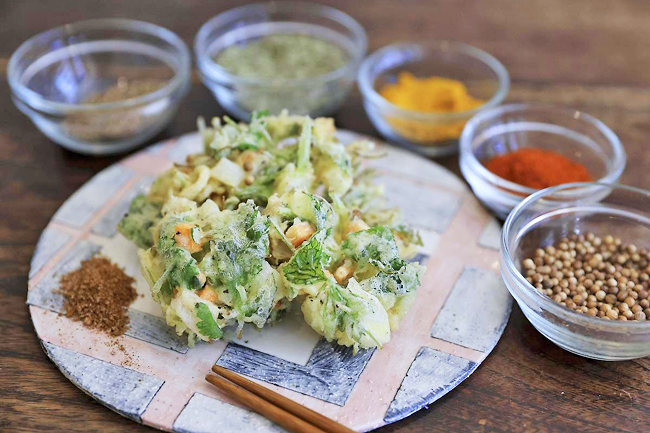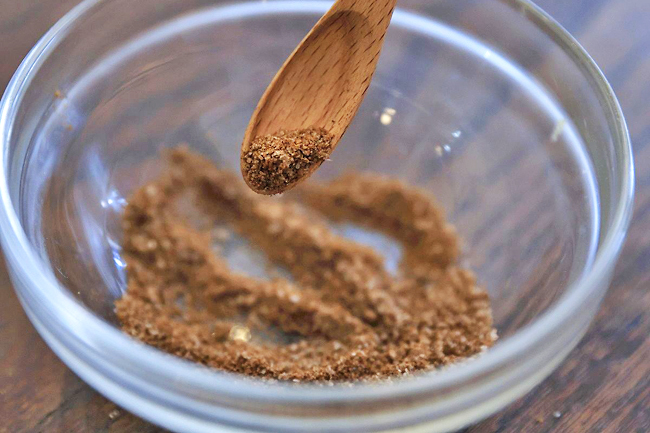ANN/YOMIURI SHIMBUN – Cookery researcher Yumiko Kozumi who owns a spice restaurant, recommends clam and spring vegetable kakiage tempura using fresh and stimulating spices that create an appetising aroma.
Kozumi is greatly familiar with Indian and Sri Lankan cuisine and has a deep knowledge of spices.
In addition to running the spice restaurant “yum-yum kade” in Bunkyo Ward, Tokyo, she holds cooking classes and events, energetically promoting the appeal of spices. She proposes using them not only in ethnic cuisine, but also Japanese and Western cuisine, and has written a book titled Spice no Kanosei (The possibility of spices) from Asahiya Publishing Co.
“Spices change ordinary dishes and make dining more enjoyable. Let’s get spices at grocery stores and use them casually,” said Kozumi.
“The spices go surprisingly well with Japanese food,” she said about the kakiage.
For the batter, she mixes fennel, which has a sweet aroma, and fresh coriander, which is also a standard spice in authentic ethnic cuisine.




Using the seeds allows you to enjoy the texture and aroma even more.
“If you start with a small amount, you won’t make mistakes, and even if you combine several kinds of spices, it won’t taste too strong,” she said.
Kakiage is usually served with tempura dipping sauce, but she recommends cumin salt instead. Roasting cumin seeds and grinding them enhances their aroma and makes it a versatile seasoning.
Spring vegetables such as spring carrots are soft, so it is best to fry them just enough to change their colour slightly to preserve their texture. First, eat them without dipping them in anything.
The sweetness of the vegetables and the umami of the clams spread out, and the batter is crispy and light.
Every once in a while, the coriander grains crackle, giving the dish a pungent aroma that wafts into your nose.
A pinch of cumin salt gives the dish a deep, spicy and bitter flavour. It is a deep fried dish, but not heavy, and it may be addicting.
SPICED CLAM AND SPRING VEGETABLE KAKIAGE
Ingredients
– 20 clams with shells
– 50g new onions
– 30g spring carrots
– 20g mitsuba wild parsley leaves
– Oil for frying
– Two tablespoons rice flour
– Five tablespoons flour
– One-and-a-half teaspoon fennel seed
– One teaspoon coriander seed
– One-third teaspoon coarsely ground black pepper
– A pinch of turmeric
For cumin salt
– Two teaspoons salt
– Two teaspoon cumin seeds
– A pinch of red pepper
DIRECTIONS
Make cumin salt. Roast the cumin seeds in a frying pan.
When the cumin seeds become fragrant and change colour, turn off the heat and transfer to a plate.
Remove from heat and grind in a grinder (or using a mortar and pestle). Mix the powdered cumin seeds with red pepper and two teaspoons of salt.
Drain out sand from the clams. Steam them in a pan with a little water and deshell. Cut the new onions into one-centimetre squares, spring carrots into seven-millimetre cubes and mitsuba wild parsley leaves into two-centimetre lengths.
In a bowl, mix four tablespoons of flour with rice flour, fennel seeds, coriander seeds, coarsely ground black pepper, turmeric and a pinch of salt, and gradually add 90cc of cold water to make the batter.
In another bowl, mix the clams and spring vegetables with one tablespoon of flour.
Mix the batter with the clam and spring vegetable mix, then ladle the batter into the bowl and deep fry in oil at about 170C.
Arrange the kakiage tempura on a plate and garnish with the cumin salt.
If any cumin salt is left over, seal it in a food storage container and use up within a week. Try a salad of leftover mitsuba wild parsley leaves and fresh onions with lemon juice and a sprinkle of cumin salt.
Cumin salt also goes well with deep-fried shrimp, boiled eggs and potato salad. “Try it when you want something a little spicy,” Kozumi suggested. – Tomoyo Yamada





